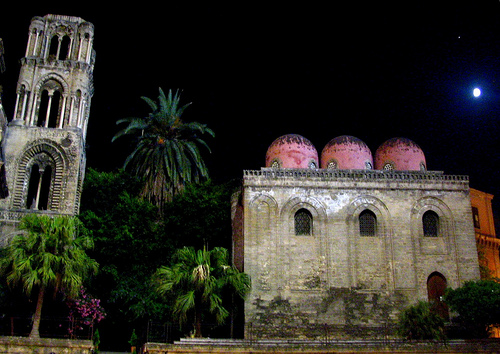
Chiesa di San Cataldo by Federico Soffici
Where
Sicilia is the largest island in Italy and the Mediterranean, and is located off the southernmost part of Italy (the ‘toe’) near Calabria, with which it shares some culinary, cultural, and linguistic similarities. Historically, Sicilia was invaded and colonized by many civilizations from around the Mediterranean basin, including the Arabs, Greeks, Normans and Spanish. Each culture left a legacy on the island, whether in the form of architecture, culinary influence or agriculture. The Arabs, who ruled the island for 200 years from the 9th century, introduced irrigation, citrus fruits and are credited with also inventing sorbets using the snow from Mount Etna, Europe’s largest active volcano. Under the ancient Greeks and Romans, Sicilia was known for its fertile soils and favourable climate: its wheat fields were legendary.

Etna by Urban82
The summers are long and hot here, with very little rainfall. When the Scirocco wind blows in from nearby Africa, it carries sand from the Sahara desert, usually for three days at a time. The soil around Etna is black from the volcanic minerals, and produces some of the best wines being made in Italy today as well as pistachios and almonds. Sicilia is one of the most important grape-growing regions in Italy, most of which is made into wine and grape must. Sicilia is also a very important producer of citrus fruits – including blood oranges and lemons – and extra virgin olive oil. There is a large community of organic farmers in the region. The main industries are agriculture, tourism and fishing: (Mazara del Vallo has one of the largest fishing industries in Italy).

Swordfish and tuna at La Vucciria Market in Palermo by Stefano Benetti
Sicilia is a magnificent island with a mix of hilly terrain and a long, beautiful coastline. For anyone interested in history, it offers some of the world’s finest ancient Greek temples and amphitheatres, as well as memorable Moorish, Norman and Baroque architecture.
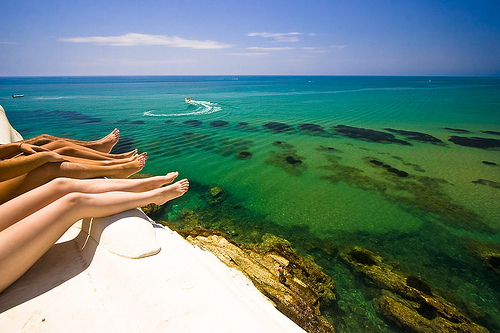
Agrigento by Matteo Mignani

Sicilia by Gnuckx
The most important cities to visit are: Palermo, Siracusa, Agrigento, Catania, Taormina, Marsala and Messina.
Sicilians are hospitable and proud, they are known for their extraordinary generosity and love of good food and family. Among their most iconic dishes are couscous (a direct link to their Arab past), seafood pasta, vegetable cookery and very sweet desserts and pastries. Sweet and sour flavours are common in Sicilian cooking.

Palermo by Andrea Ciambra

Inside La Matorana in Palermo by Giulio Nepi

Piazza Pretoria in Palermo by OlsenWeb
What to See
PALERMO
Palermo is one of Italy’s most important cities and was capital, with Napoli, of the Kingdom of the Two Sicilies. It is worth spending a few days there to visit many important cultural sites, including the Norman cathedral and the Baroque churches: l’Oratorio del Rosario di San Domenico, l’Oratorio del Rosario di Santa Cita and l’Oratorio di San Lorenzo. Palermo’s most interesting food markets today are Ballarò and Il Capo. Not far from Palermo are the remarkable church of Monreale, with its Byzantine mosaics, and the small fishing port of Mondello to which the noble Palermo families would go in summer.

Antica Focacceria San Francesco by James Helland

Sicilian pastries by Dom Dada
The catacombs housing thousands of mummies (Catacombe dei Cappuccini) are also interesting. In the city centre, try the street food stands, pastry shops and gelaterie. Lemon and coffee granita are specialities as are fruit gelati such as mulberry (gelso) and jasmine flower (gelsomino).

Ustica by Federica Esse
From Palermo you can take a boat to the island of Ustica, a volcanic island with a prehistoric village and volcanic island that is also a marine reserve, great for snorkelling or diving. Ustica is famous for its tiny lentils.

Cefalu by Salvatore Freni Jr
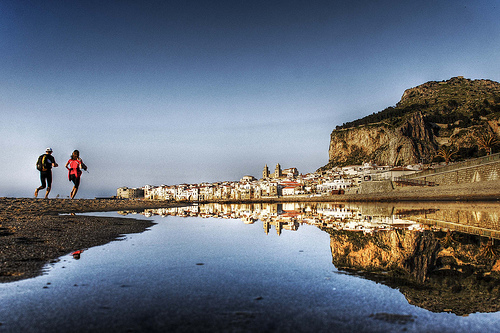
Cefalu by Sirio Grisanti
East of Palermo, on the road to Messina is Cefalù, a small fishing village on the coast that boasts a beautiful Duomo and fine mosaics.
Places to Visit:
Antica Focacceria San Francesco S.A.S.
Via Alessandro Paternostro, 58 90133 Palermo Tel: +39.091.320264This restaurant specialises in the street food of Palermo, including, panino con la milza (spleen sandwich), panelle (chick-pea fritters) and arancini (fried rice balls). Food to take away or eat there.

Valle dei Templi in Agrigento by Dennis Jarvis
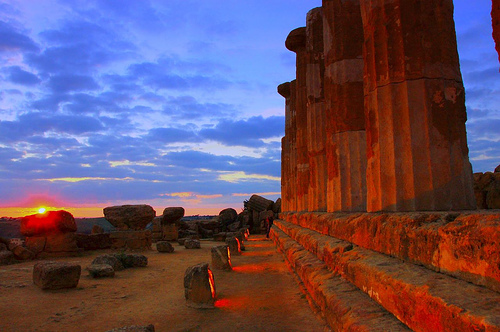
Valle dei Templi in Agrigento by Stefano Liboni

Segesta by Vmabney
OTHER PLACES
The hillside city of Agrigento faces out to sea and has a cluster of ancient Greek temples in what is known as the Valley of the Temples, or Valle dei Templi, now a UNESCO World Heritage Site. Other important Greek sites can be found at Segesta, Taormina, Siracusa and Selinunte. For those more interested in ancient Rome and its mosaics, a visit to the Roman villa at Piazza Armerina is a must; it too is a World Heritage Site.

Isole Eolie by Puffodrax

Dolphins near Isole Eolie by Ghost-in-the-Shell

Sailboat near Stromboli Island by Marina & Enrique

Stromboli by Josep Salvia I Bote
The Isole Eolie (the Aeolian Islands) are stunning and loved for their beautiful coastlines and hidden coves. The island of Vulcano comprises four volcanoes and the Porto di Levante beach, which is known for warm steam jets and the Great Crater. The island of Stromboli has black pebble beaches and an active volcanic crater that can be reached by foot.

Erice by Vento di Grecale

View from Erice by Mario Cutroneo
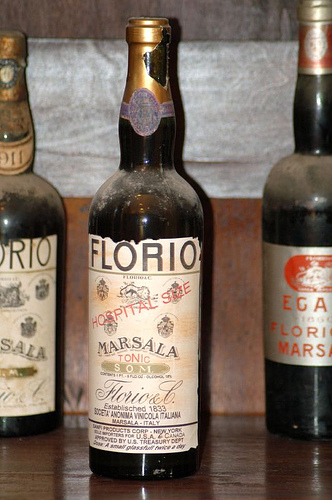
Marsala by Gian Luigi Perrella
On the west side of Sicilia is the small town of Erice. It was founded by the Phoenicians but treasured by the Greeks; it sits high on a mountain overlooking Trapani and the sea. Nearby, the miniscule island of Mozia has a small museum that is worth taking the boat across the lagoon to if you are visiting the salt flats of Marsala. Marsala is a welcoming small city at the most westernly corner of the island and was an important city for the Phoenecians. It is home to the great wine, Marsala, that in its highest form is one of the greatest Mediterranean aperitivi and after-dinner wines. (Never buy cheap, ‘flavoured’ Marsala wine). Marsala also has a recently restored marketplace in the town centre for local vegetable growers and fishermen.If you are interested in the history of wine, visit Cantine Florio in Marsala and Cantina Marco De Bartoli (just outside of the town) to get a taste of the great Marsala wine that was loved by Admiral Nelson. In the summer, it is lovely to spend a few days on the beach of San Vito Lo Capo and walk in the Zingaro Nature Reserve nearby. It is located between Trapani and Palermo.

Pantelleria by Marco Meoni
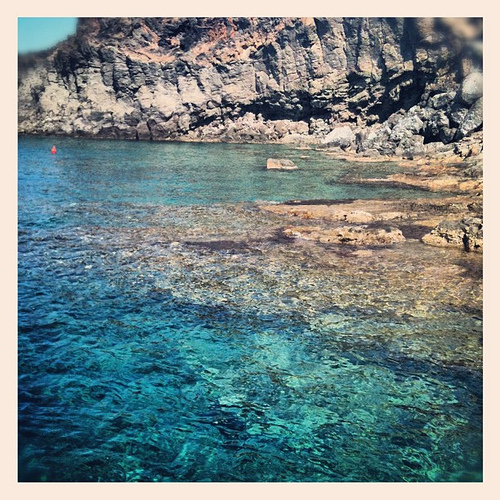
Punta di Nica in Pantelleria by Marco Pela

Passito di Pantelleria by Edsel Little
From Marsala, if you have a few days free, travel to the island of Pantelleria. This black, volcanic island is quite primitive and is known as the ‘Black Pearl of the Mediterranean’. It is known too for its delicious small capers and the opulent dessert wine, Passito di Pantelleria, made from native Zibibbo grapes.
On the east side of Sicilia, Catania has one of the most lively food markets in Italy. Siracusa and Taormina have important Greek amphitheatres that still host outdoor summer theatrical performances. Siracusa, one of Sicilia’s most important cities, is located on a bay and has important medieval and Baroque architecture on the island of Ortigia. The archeological museum (Museo Archeologico Regionale Paolo Orsi) has many Greek and Syracusan artifacts. Other places of interest are the catacombs (Catacombe di San Giovanni), papyrus beds along the River Ciane (Fonte Ciane), and the artificial grotto (Latomia del Paradiso).
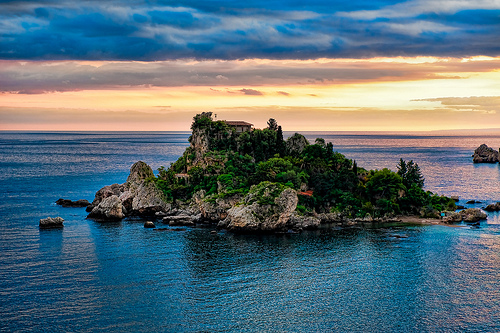
Isola Bella, Taormina by Julian Gonzales
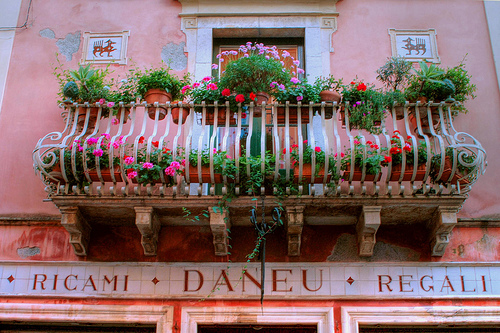
Terrace in Taormina by Francesco Sgroi

Taormina by Giaccomo Carena

From picturesque Taormina, with its wide views of the sea, you can easily travel up to the slopes of the volcano, Mount Etna, and visit some of the important wineries on its northern face.

Frutta Marturana by Caleb Lost
What to bring home: olives, honey, frutta martorana (marzipan fruits), capers, caper berries, cubbaita / giuggiulena / cumpittu (sesame nougats), bottarga (salt-cured mullet or tuna roe), fine Marsala wine, ceramics from Caltagirone, Sciacca, and Santo Stefano di Camastra, coral jewellery from Trapani, dessert wine from Pantelleria, and candied citrus fruits.

Swordfish in La Vucciria Market in Palermo by Steve Silverman
The Larder
The island’s sun and fertile soils produce the intensely flavoured ingredients of Sicilia, from the iconic citrus fruits (especially blood oranges, lemons and mandarins) and tomatoes, to the artichokes, olives, almonds, pistachios and fico d’India (prickly pear or cactus fruit ) that thrive in the intense summer heat there. Grains and legumes are also cultivated. The sea offers a plethora of fresh seafood from the now over-fished tuna and swordfish to the abundant calamari, red shrimp (gambero rosso) and other Mediterranean fish.

Sicilian blood oranges by Rob Diamond

Red Mediterranean prawns by Nate Gray
Local ingredients reflect the various peoples who historically influenced Sicilia. The Greeks introduced their love of wine and its culture. The Byzantines introduced sweet and sour food preparations. The Arabs brought citrus fruits, apricots, melons, sugar, rice, saffron, nutmeg, cloves, pepper, and cinnamon. The Spanish introduced cocoa, maize, and tomatoes. The Bourbons and Monzù (French chefs to Palermo’s aristocratic families) influenced the preparation of food.

Busiati by Manuela Zangara
Flour and water pasta reigns in Sicilia and the most favoured varieties include maccheroni, vermicelli, taccuna (coloured with cuttlefish ink), corkscrew shaped maccaruna i casa / busiati / gnocculi, and the hollow cavatelli / cavatiddi / gnocculi / gnucchitti. Bread is still sometimes baked at home and meats and fish are typically roasted over wood-burning fires.

Chestnuts by Antonio d’Emanuele
Other typical local ingredients include: grapes, peaches, chestnuts, hazelnuts, figs, raisins, cauliflower, broccoli, aubergine, squashes, capers, caper berries, honey, olive oil, lentils, broad beans, cicerchia (grass peas), bottarga (salt-cured mullet or tuna roe), seafood such as (prawns, langoustines, calamari, cernia di fondale (grouper), mormora (striped sea bream), rays, sarago (white sea bream), dentice (dentix), mussels, sardines, and cuttlefish), vinu cuottu (wine must syrup), asparagus, purslane, mustard, stockfish, baccalà (salt cod), cinnamon, sesame seeds, orange blossoms, jasmine, and anise.

Pasta con le sarde by Stijn Nieuwendijk
Menu
Sicilian food, particularly in the west and south where there was a stronger Arab influence, is very flavourful and has lots of contrasts such as sweet and savoury or sweet and sour. Caramelised onions substitute garlic as a flavouring and were introduced by the French. Pasta is loved in Sicilia but is made without eggs and is served with vegetables and fish rather than meat. The most famous dishes are pasta alla Norma (pasta with aubergine and tomatoes), pasta con le sarde (pasta with sardines and wild fennel) and melanzane alla parmigiana (aubergine layered with tomato and Parmigiano-Reggiano cheese). The Sicilians are very fond of street food and often eat snacks bought from street vendors. See Sicilian recipes here.

Cannoli by Stefano Mortellaro

Cassata siciliana by Manuela Zangara
The influence of many cultural dominations is evident in Sicilian food. While there may be fewer soups in the Sicilian repertoire, pasta is ever popular, as is couscous (granular pasta made from durum wheat, a legacy of the Arabs), served with vegetables or fish. The art of pastry making was also learned from the Arabs and there are many classic Sicilian pastries: cannoli (fried pastry tubes filled with sweetened ricotta – preferably ewe’s milk ricotta – studded with candied fruit or chocolate), cassata siciliana (sponge cake topped with almond paste, filled with sweetened ricotta and decorated with candied fruit) that is always served at Easter, weddings, and christenings) and many types of doughnuts.

Cioccolato di Modica (cold-conched chocolate)
Ice cream making and confectionary were also learned from the Arabs and the Sicilians excel at fruit gelati. Sweets feature prominently in many religious and village festivals and each celebration has a special confectionary. The Spanish brought a type of cold-conched chocolate to the island. The French influence to aristocratic Sicilian cuisine – due to the French chefs called Monzù (from the French, Monsieur) who worked in the noble households of Palermo is apparent in its timbales, bechamels and the force-meat dish, falso magro.

Arancini by Woo Wei-Duan
Favourite dishes from Sicilia include: arancini (deep-fried breaded rice balls), caponata (sweet and sour aubergine), cuscusu (couscous with fish or vegetables), braciole di spade (swordfish rolls) and pesce con salmoriglio (fish with a lemon, herb and garlic sauce).

Grape harvest in Sicilia by Fabio Ingrosso
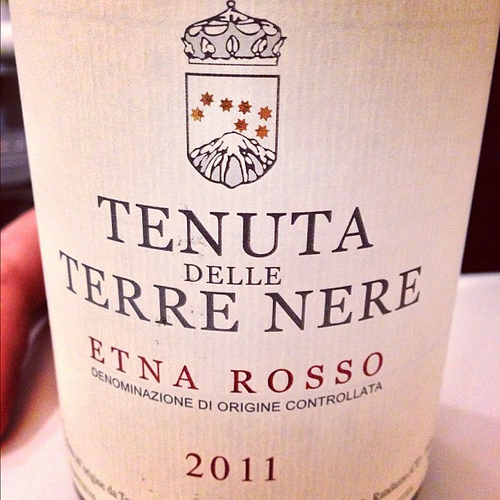
Etna Rosso, Tenuta delle Terre Nere by Todd Mundt
Sicilia is one of Italy’s most important wine-producing regions. Recently there has been global interest in some of the Sicilian native grape varieties, including the whites Grecanico, Grillo and Zibibbo, and the reds Nerello Mascalese and Nero d’Avola. Inzolia and Chardonnay are the most interesting white grape varietals in Sicilia. Important terroir labellings for both red and white wines are IGT Sicilia and Etna and for red wines also include Cerasuolo Vittoria and Faro. Look for producers of white wine such as Planeta, Tasca d’Almerita, Donnafugata, Benanti, Centopassi, and Firriato. Excellent producers of red wine include Palari, Tasca d’Almerita, Terre Nere, COS, Donnafugata, Graci, Gulfi, Benanti, Centopassi, and Viticultori Associati Camicatti.
The finest pre-dinner and dessert wines are Marsala and Passito di Pantelleria. Try Marsala produced by Curatolo, Florio, or Pelligrino. My favourite sweet wine in the world is Donnafugata’s Passito di Pantelleria.
Related articles:
- Palermo: The most underrated city in Italy
- Marsala: Sicily’s most interesting but nearly extinct wine
- Valle delle Belice: The land of milk and honey…and olives
- The Roman grain basket reemerges
- Exotic Sicily
- Sicily’s Ionian Coast
What to Eat
Typical dishes in Sicilia (the most classic are written in bold):
Pane (Bread)
Cabbucio (bread rolls made with oregano and aniseed and filled with anchovies, tomato, pecorino cheese, olive oil, and oregano)
Cucciddatu (puff pastry ring filled with dried figs, almonds, sesame seeds and raisins)
Cuddura / Cucciddatu (sourdough bread sprinkled with sesame seeds, made for holidays)
Muffoletta/ Guastedda (soft bread rolls which may be flavoured with sesame seeds, anise, or fennel)
Pupaccene (figurines of various sizes, depicting dancers and riders, made entirely of sugar)
Antipasti (Starters)
Antipasti misti (shellfish, sea urchins, octopus stew, tuna eggs, tuna and smoked swordfish, anchovies with oil)
Arancini di risu / Arancini / Arancine (deep-fried breaded rice croquettes, shaped either as balls or pyramids, and filled with meat sauce, or chicken giblets)
Caponata di melanzane (sweet and sour aubergine with onions, olives, capers, celery, and tomato)
Cazzilli (potato croquettes flavoured with mint and parsley or garlic. May be breaded, often served with panelle)
Cudduruni (bread pocket filled with any of these ingredients: onions, broccoli, anchovy, wild chard, mortadella, pecorino cheese, and black olives)
‘Mpanata (focaccia filled with salt cod and eel or fish, or conger eel, skate, moray eel, and smooth hound fish)
Panelle (chickpea fritters flavoured with parsley or wild fennel, often served with cazzilli)
Pani ca’ meusa (muffoletta filled with boiled calf’s spleen and lung and either olive oil or caciocavallo cheese)
Rianata (pasta topped with garlic, primosale cheese, anchovy, tomatoes, pecorino cheese, olive oil, and oregano)
Sarde a Beccafico (Baked or fried rolled sardines stuffed with breadcrumbs, raisins, capers, and pine nuts)
Scacciata / Scaccia / Scaccetta (flatbread filled with anchovies, ham, olives, onions, tomatoes, sausage, cauliflower, and pecorino cheese)
Sfincione (flatbread topped with tomatoes, onion, anchovy, and caciocavallo cheese)
Primi (First Courses)
Busiate con pesto trapanese (pasta with a sauce of crushed garlic, basil, almonds, pecorino cheese, tomatoes, and olive oil)
Cannelloni (large tubular pasta stuffed with roasted beef and caciocavallo cheese and baked with eggs, pot roast gravy, and caciocavallo cheese on top)
Cavatiddi / Gnucchitti (hollow short pasta served with eel sauce, tomato sauce, tomato aubergine sauce, or pork meat sauce and pecorino cheese)
Cuscus alla trapanese / Cuscusù (couscous (grain like pasta) cooked with onions and bathed in broth, served with aghiotta di pesce (fish stew))
Frittedda (broad bean, artichoke, and pea soup sometimes with wild fennel, sometimes used to dress pasta)
Lasagne cacate (baked pasta sheets layered with pork and veal or beef sauce, fresh sheep’s ricotta, and salted ricotta, traditional for New Year’s Eve)
Maccheroni al gratin (pasta in cheese sauce baked with a golden breadcrumb crust)
Maccu di favi (puréed broad bean and fennel soup served with sautéed onions, tomatoes, served with pasta)
Maccu di San Giuseppe (soup made from broad beans, chickpeas, beans, peas, lentils, borage, wild fennel, tomato and onion, sometimes with dried chestnuts, pasta, or fried bread)
Pasta a picchi pacchi / Picchi pacciu / Spaghetti alla trapanese (pasta with raw tomatoes, garlic, basil, chili, olive oil, and caciocavallo cheese)
Pasta alla Norma (pasta with tomato sauce, basil, smoked ricotta, and fried aubergine)
Pasta alla Papalina (pasta with tomatoes, garlic, anchovies, wild fennel, and hard bread crumbs)
Pasta c’anciova e muddica atturrata (pasta topped with breadcrumbs flavoured with anchovy, garlic, onion, and parsley)
Pasta con i tenerumi (pasta with zucchini shoots and leaves, sun-dried or fresh tomatoes, garlic, chilli, and olive oil)
Pasta con le castagne (pasta with chestnuts, olive oil, and pepper)
Pasta con sarde (pasta with sardines, anchovies, fennel, saffron, black pepper, pine nuts, and raisins, if baked, then topped with breadcrumbs)
Pasta ccu l’agghiue l’uogghiu (spaghetti pasta with garlic and olive oil sauce and topped with caciocavallo cheese)
Pasta lorda (pasta with fried aubergine, beef, and pork cooked in red wine and tomato sauce, basil, and pecorino cheese)
Pasta ‘caciata (baked pasta with cauliflower or broccoli, tomato, onion, pork, sausage, wine, and pecorino cheese topped with breadcrumbs)
Spaghetti al nero di seppia (cuttlefish ink black spaghetti)
Secondi (Main Courses)
Agghiotta / Ghiotta (fish stew made with fresh or preserved fish, tomatoes, onions, celery, green olives, and capers, sometimes with raisins and pine nuts)
Agglassato / Aggrassat (leg of lamb or kid goat stewed in white wine with tomatoes)
Braciole di spada (baked, breaded, rolled swordfish stuffed with breadcrumbs, swordfish, pine nuts, raisins, and lemon zest or simply breadcrumbs, olive oil, and garlic, sometimes with capers, basil, and cheese or finished with sugared lemon juice)
Farsumagru / Farsumauru / Bruciuluni / Falso magro (baked beef roll stuffed with eggs, pecorino cheese, ragusano cheese, carrot, rosemary, parsley, and nutmeg with white wine and tomato paste)
Involtini alla palermitana / braciulittini (fried or stewed veal rolled with breadcrumbs, raisins, pine nuts, cheese, bay leaves, and onion, cooked in tomato sauce)
Lattume (boiled or fried sperm sack of tuna dressed in oil, vinegar, lemon, salt, and herbs)
Pesce con salmoriglio (roast fish served with a sauce of olive oil, lemon juice, garlic, parsley, and oregano)
Stigghiola (grilled lamb intestines, sold on the street in Palermo)
Tonno ammuttunatu (tuna stuffed with spicy caciocavallo cheese, garlic, mint, and salt)
Turcinuna (baked lamb intestines casserole)
Zuzzu (pig trotters, tail, ears, and snout)
Contorni (Side Dishes)
Broccoli affogati (broccoli rabe with oil, onion, and white wine, sometimes with anchovy and black olives, topped with pecorino cheese)
Melanzane ammuttunate (baked aubergine stuck with garlic and basil or mint, dressed with tomato sauce, sometimes with caciocavallo cheese)
Melanzane chine (baked, boiled, or fried aubergine stuffed with meat, sometimes battered before frying, topped with tomato sauce)
Nsalata ri cipudda e pummaroru (salad with tomato, Tropea red onion, and oregano)
Dolci (Desserts)
Buccellato siciliano (Christmas cake filled with dried figs, raisins, orange zest, zuccata (candied pumpkin), chocolate, cinnamon, cloves and / or walnuts, almonds, and pine nuts, topped with candied fruit and pistachios)
Cannoli (crisp tubular pastry filled with pastry cream or sweetened ricotta flavoured with candied fruit and chocolate)
Cassata siciliana (sponge cake and almond paste lined cake filled with sweet ricotta flavoured with chocolate and vanilla and glazed with sugar and candied fruit, served at Easter, weddings, and christenings)
Cassata gelato (ice cream flavoured with candied fruit)
Cassateddi dolci (fritters filled with sweet ricotta and chocolate)
Crispella di riso (rice pudding fritters covered in honey flavoured with vanilla and sometimes orange and lemon zest)
Cubbaita / Giuggiulena / Xhurxhullet (sesame, almond, and honey nougat)
Cuccia di Santa Lucia (wheat berries cooked with honey, milk, candied fruit, and chocolate)
Cuscus duci (sweetened couscous (a grain like pasta) served with pistachio cream, almonds, chocolate, candied fruit, cinnamon, and icing sugar)
Dolci di riposte (almond paste cake filled with citron preserve, zuccata (candied pumpkin), or jam, decorated with icing sugar)
Frutta marturana / Pasta reale (fruit-shaped painted marzipans made from almonds pounded with sugar, flavoured with orange flower water and vanilla)
Gelato di Campagna (frozen ice with sugar, cinnamon, candied fruit, almonds, and pistachios)
Gelo di Melone (a dessert which can be melon seeds and flesh cooked with sugar, cinnamon, and jasmine, topped with chocolate, pistachios, and / or zuccata (candied pumpkin) or made from carob or cinnamon or cactus pears, or coffee)
Latte di Mandorla (almond milk, served chilled)
Mazaresi al pistachio (pistachio cookies with orange zest)
Minni chini / Minni di Sant’Agata / Mini ‘i vergini (breast-shaped pastries made from puff pastry, almond paste, ricotta cream, candied fruit, cinnamon and vanilla liqueur, topped with a cherry)
‘Mpanatigghia (pastry filled with veal, sugar, almonds, dark chocolate, egg whites, cinnamon, and cloves)
Mustazzola / Mostaccioli / Mostacciuoli (pastry shell filled with cooked wine must, chopped almonds and walnuts, orange zest and cinnamon)
‘Nfigghiulata (focaccia flavoured with figs and calamint)
Pasta fritta alla siracusana (deep-fried pasta rolls covered in honey)
Petrafennula / Petramennula (hard nougat made with almonds, sugared almonds, honey, cinnamon, and orange and citron zest)
Pignoccata / Pignolata / Cicerchiata (fried dough balls piled into a pine cone shape and bound with honey or lemon and chocolate icing)
Piparelli (crispy spiced fruit buns shaped like salami)
Sancelli (lamb’s and kid goat’s blood, chocolate, dried fruit, and spice pudding)
Sfinci di San Giuseppe (fritters topped with ricotta cream, candied fruit, chocolate, candied orange, icing sugar, and pistachios)
Pasta riali (marzipan)
Sfoglio (short crust tart filled with tuma cheese, sugar, lemon zest, chocolate, and candied lime)
Viscotta di mennula (almond biscuits)
Formaggi (Cheeses)
Caciocavallo Palermitano (a semi-hard raw cow’s milk cheese which is rectangular in shape and traditionally made from the milk of Cinisara and Modicana cattle, produced in the provinces of Palermo and Trapani)
Canestrato (a mature, firm mixed cow’s and goat’s milk cheese moulded in rush baskets giving it its characteristic shape and name (canestro means “basket”), may include black peppercorns or chilli, produced all over Sicilia)
Fiore Sicano / Tumazzu vi vacca (a semi-mature to mature, soft raw cow’s milk cheese which is aged on holm-oak or oak wood shelves in a limestone walled basement, produced in Monti Sicani)
Maiorchino (a fresh to mature, fatty, semi-firm raw mixed ewe’s and goat’s milk cheese dating from the 17th century and is one of Italy’s great ewe’s milk cheeses, mild if eaten fresh and more medium flavoured if matured, produced in the province of Messina)
Piacentinu Ennese DOP (a firm ewe’s milk cheese flavoured with peppercorns and saffron from the province of Enna, it can be eaten fresh as a table cheese or matured as a grating cheese)
Provola (a smooth, firm, raw cow’s milk cheese which is pear shaped with a “head” where the string is tied to hang the cheese, mild in flavour when fresh and tangier in flavour when matured, from the Nebrode or Madonie mountains, can be eaten as a table cheese or an ingredient in cooking)
Ragusano DOP (an aromatic and complexly flavoured firm, full cream raw cow’s milk cheese similar in technique to caciocavallo but made in large, rectangular forms – above, from the provinces of Siracusa and Ragusa)
Ricotta infornata (a fresh or mature, creamy mixed cow’s, ewe’s and goat’s milk whey cheese, the name means “baked ricotta” referring to the cheese being baked in a stone oven, it can be eaten fresh or matured in the sun and then used for grating, from all over Sicilia)
Ricotta Salata (ricotta that has been pressed, salted and dried. Used grated over many Sicilian pasta and vegetable dishes).
Tuma Ammucciata (a soft goat’s milk cheese from the province of Agrigento, the names “ammucciata” means “hidden” referring to the tradition of the cheeses being hidden in the walls of the cheesemaker’s home, the cheese is made in a container one used for cereals)
Tuma Persa (an aromatic soft, firm, crumbly cow and / or ewe’s milk cheese but the best versions are made with only cow’s milk, the cheese is named persa meaning “forgotten” as during the cheese making process the cheese is left, or “forgotten”, for a few days in between moulding, brushing, and washing. From the Monti Sicani area)
Bevande (Drinks)
Latte di mandorla (almond milk)
Seltz al limone (salted lemon juice)
Zammù (star anise flavoured soft drink)

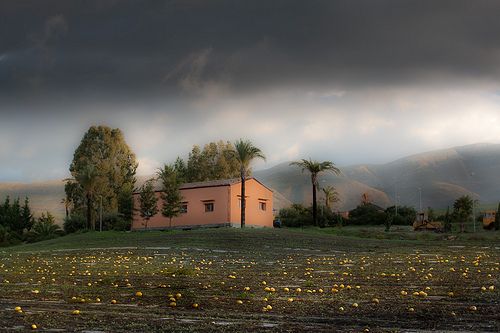



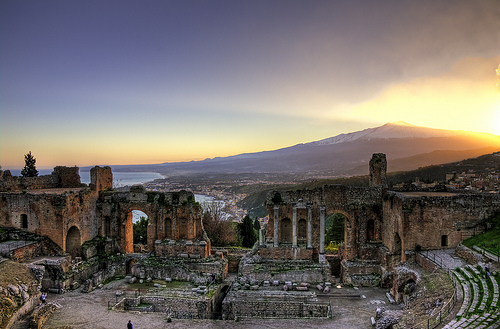




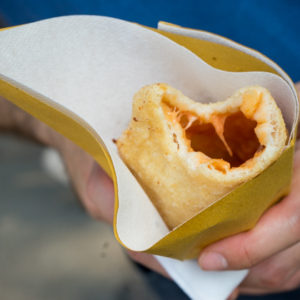

Leave a Reply